This article describes the top safe cities in South America for ecotourism.
Safety is a common concern among people planning to journey on this magnificent continent, so it is essential to explore this topic.
Generally, the continent is safer to travel than many years ago. Still, each country has some differences in terms of security. Being informed upfront about the places you plan to visit is essential.
I chose the cities in this article based on my experience in each and the histories I heard from other travelers I met on the way.
It is important to note that all the opinions in this article are based on my experience as a black person in South America.
If you are interested in learning about the top safe cities for ecotourism in South America and other safety-related topics, keep reading.
Table of Contents
Cusco, Peru
Cusco, the historic capital of the Inca Empire, is a fantastic destination for ecotourism in South America. The province has so many options that one can spend months visiting most of them. In addition, you will have the opportunity to learn about Inca and Peruvian cultures, enriching your travel experience.
Cusco is built around the Andean Mountains. It serves as a gateway to the Sacred Valley, Choquequirao, and the iconic Machu Picchu, attracting travelers worldwide. The city is a UNESCO World Heritage Site, containing a mix of well-preserved colonial architecture and ancient Inca ruins.
For ecotourists, Cusco provides a unique opportunity to explore the fascinating history of the Inca civilization while immersing themselves in the stunning Andean environment.
Cusco is considered one of the safer destinations in Peru for travelers. Petty and minor crimes can happen anywhere in the world; minor precautions are also necessary in Cusco. Pay attention to sellers trying to distract you at all costs; they could be trying to steal something from you.
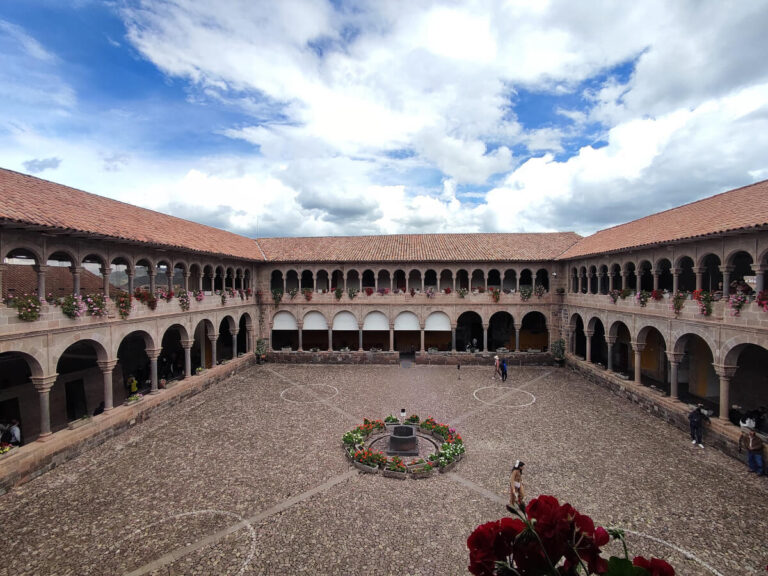
Tourism is Cusco's main income
Tourism is Cusco’s main source of income, so the government adopted several measures to ensure tourists’ safety. The area around the Plaza de Armas and San Blas is generally very safe.
Cusco is incredible for outdoor activities and ecotourism. It offers trekking tours along ancient Inca trails to diverse ecosystems like lakes and forests. There is no shortage of adventures for those seeking to connect with nature. I personally spent three months exploring the area around the city.
In addition to its natural and historical attractions, the city offers a rich cultural experience that is deeply rooted in its indigenous heritage. You can explore traditional markets, try authentic Peruvian cuisine, and participate in local festivals that celebrate the region’s vibrant culture.
Florianopolis, Brazil
Florianopolis, often referred to as “Floripa,” is one of the safest cities in Brazil. Known for its beaches, landscapes, and diverse ecosystems, Florianopolis is a top destination for ecotourism in South America.
The city is on an island, offering a unique mix of natural beauty and urban charm. With over 60 beaches, it is an excellent city for those who enjoy water activities like surfing, snorkeling, and swimming. There are also plenty of hiking options in the surrounding hills and forests.
The local government has made significant efforts to ensure the safety of both residents and visitors, focusing on promoting sustainable tourism practices. Crime rates are relatively low compared to other major Brazilian cities, so you can enjoy activities peacefully.
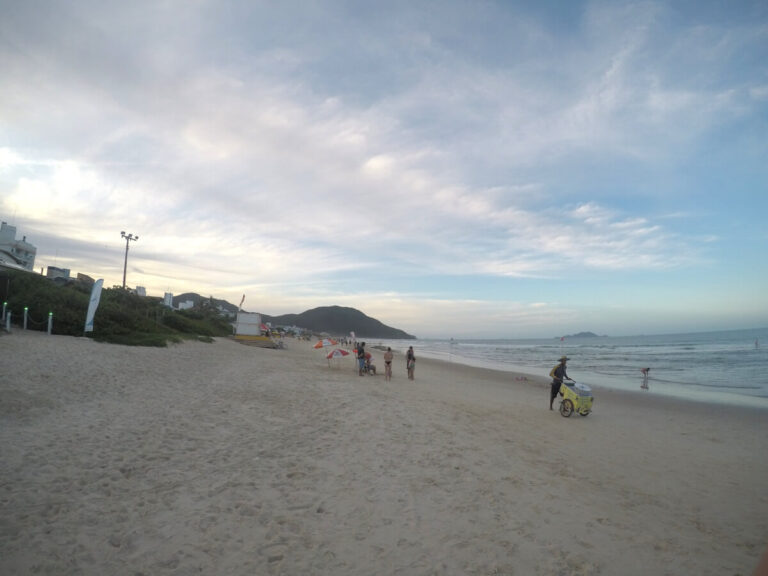
A paradise for ecotourism
If you are a big fan of hiking, there are more than 100 trails throughout the island. There is a lake in the middle of the island called Conceicao and the Gravata beach, one of the most famous hikes in the area. Pico da Pedra is a great day hike with a viewpoint at the top where you can see stunning views of Floripa and the Conceicao Lake.
The surfing scene is big in Floripa; there are beaches for all levels of surfers. If you are curious to try out for the first time or you are a beginner, the Barra da Lagoa beach is a great place to visit. There are plenty of surf schools where Portuguese, Spanish, and English are spoken, making it easier to learn the basics.
If you are an intermediate level, check the Praia Mole, a beach with thick sand and open breaks. It is not suitable for swimming but perfect for surfing. Lastly, for advanced surfers, my recommendation is to visit Praia Joaquina, known for its consistent ground swells and intense waves.
Medellin, Colombia
Medellín was one of my biggest surprises while traveling through South America. After hearing many stories of the city’s troubles in the ’90s, I had a specific image of the country and the city in my head. To my surprise, in a positive way, Medellin became one of my favorite places in Colombia for ecotourism and one of the top safe cities in South America.
The climate in Medelling is very pleasant, and the cultural scene is vibrant. The city has experienced a remarkable transformation in recent years, becoming a symbol of progress and sustainability. Medellín has worked hard to establish itself as one of Colombia’s safer cities for tourists.
There are still some issues, and precautions are necessary, but you won’t feel unsafe in the city. Avoid walking alone at night and in isolated areas. El Poblado, La Candelaria, and Envigado are very safe neighborhoods.
In recent years, the city has become very popular with digital nomads. With great internet, a low cost of living, and many great coffee shops. El Poblado is known as a great digital nomad hub.
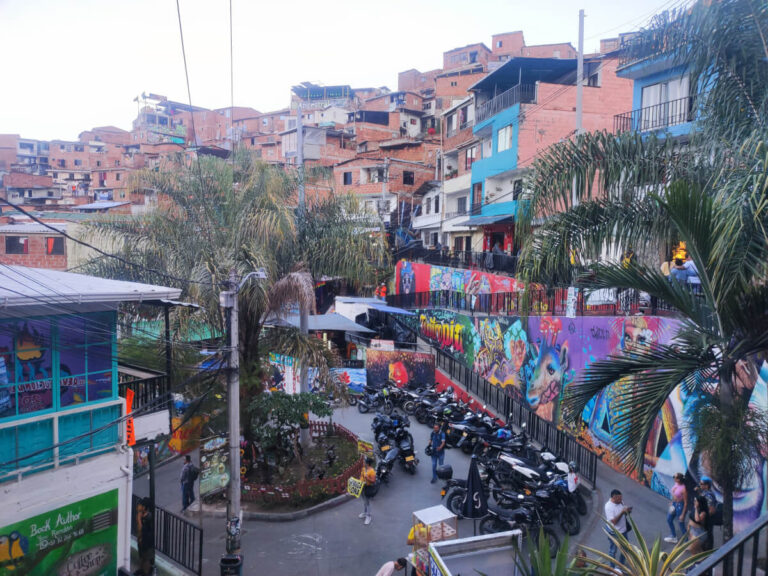
A base for ecotourism
For ecotourists, Medellín provides several options to explore Colombia’s rich biodiversity and landscapes in the surrounding area. Places like Guatape, Arvi Park, the Botanical Garden, and the Antigo Ferrocarril Tunnel await you to explore them.
What makes me add Medellin to this list is that the city is an amazing base for ecotourism activities around the country. Transportation connections are good from there, and it is easy and cheap to travel to the rest of the country.
Medellin is a great option if you are planning to spend some time in Colombia and want to have a stable base for your explorations. If time is a luxury you don’t have, the city can give you enough options for a few weeks of fun.
La Paz, Bolivia
La Paz, the world’s highest capital city, is a top destination for ecotourism in South America because it offers a mix of high-altitude landscapes and rich cultural heritage. Located in a valley surrounded by the Andes Mountains, the city has an extensive network of rivers flowing under it.
In general, the city is not dangerous, but there are places to avoid and pay more attention to. For example, in El Alto, some tourists told me that a group of people were distracting them to steal their belongings. Staying in Sopocachi, San Miguel, or San Jorge will be a good choice to avoid problems.
Besides the standard pickpocketing you can find almost anywhere, the city has made significant progress in improving safety, mainly in the neighborhoods I mentioned, due to the increased number of visitors staying in these areas. The primary means of transportation in the city is the cable car, which is very safe and reliable.
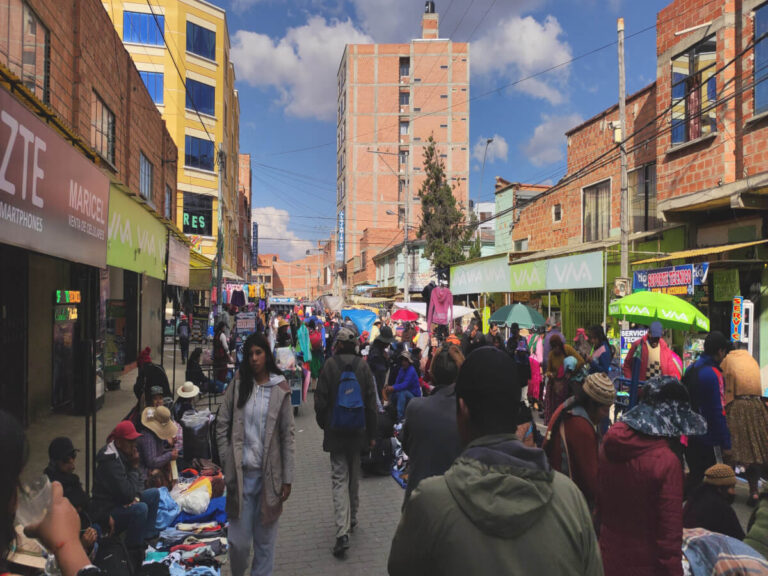
High altitude landscapes
Ecotourism in La Paz is defined by its proximity to diverse and spectacular natural landscapes. From the city, ecotourists can travel to the Yungas region, where the Amazon rainforest meets the Andes, offering incredible opportunities for trekking and wildlife spotting.
The Yungas region also has the famous Death Road, which connects La Paz with Coroico. Nowadays, the road is mostly used for tourism and offers ecotourists the opportunity to embark on a mountain bike adventure.
The nearby Valle de la Luna (Moon Valley) and the Valle de las Animas (Valley of the Souls), with their unique rock formations, provide a beautiful hiking experience.
La Paz is also the base to challenge yourself in the Huayna Potosí trek. This mountain attracts many adventurers and offers breathtaking panoramic views during sunrise. The trek lasts for three days, and there is an optional adventure to get pickaxes and climb the Huayna glacier, located on the slopes of the mountain.
This makes La Paz a great place to be part of the list of safe cities in South America.
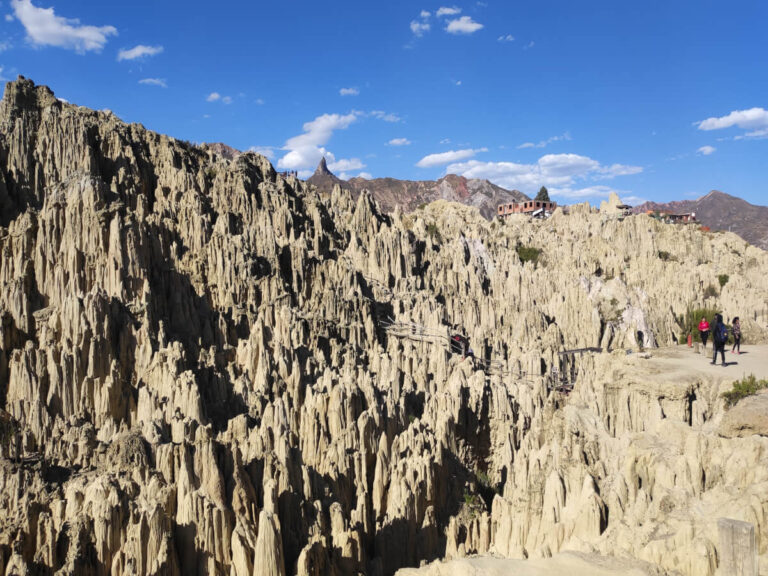
Conclusion
This article explored safe cities in South America for ecotourism. The goal was to give you more ideas and insights about these cities so you can add them during your next trip to this magical continent.
Safety has improved greatly in the last few years, and I am very optimistic about the future. Even though there is much work to be done, the continent is slowly improving and developing.
If you enjoyed this article and want to learn more about ecotourism, consider joining my newsletter; it’s free!! You will receive emails about the newest posts in this blog and other travel information that I find important to share with you.
I look forward to welcoming you back here soon! Until then, take care, and happy travels!







